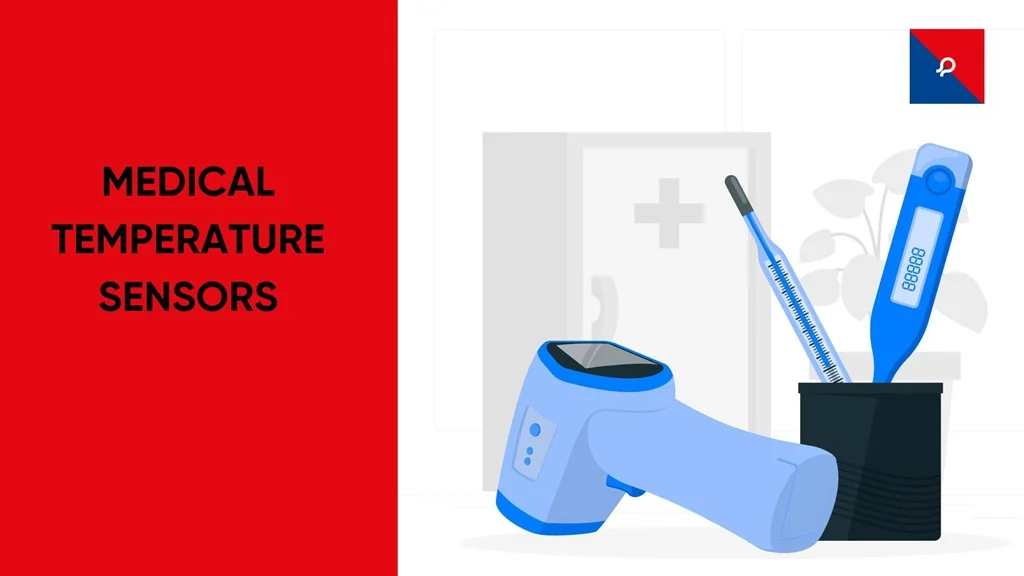
Automotive Temperature Sensors – The Unsung Heroes Under Your Hood
Automotive Temperature Sensors – The Unsung Heroes Under Your Hood

Wonder what prevents your vehicle from having a tantrum when you accelerate or get stuck in traffic for a whole hour? No, not magic, it's science. And one of the unsung MVPS doing its thing quietly is the vehicle temperature sensor.
Now, don't go rolling your eyes and saying, "Seriously? A sensor blog?" We promise it's more interesting than you sound because these little pieces of technology are doing some hefty lifting to ensure that your car doesn't go from zero to 'fireball' on the freeway.
So buckle up, we’re diving deep into the world of automotive temperature sensors.
What is an Automotive Temperature Sensor?
An auto temperature sensor is a tiny piece of equipment that measures the temperature of a component on your vehicle, whether it is engine oil, coolant, intake air, or even electric car battery packs. It is essentially your vehicle's built-in thermometer, checking every moment whether something is too hot to handle.
When a sensor notices that something's warming up more than it ought to, it sends a signal to the Engine Control Unit (ECU). The ECU responds, whether that is turning on the cooling fan, modifying the air-fuel mixture, or softly reminding your engine, "Hey buddy, ease up."
Why Are They So Important?
Imagine going for a jog on a sunny day, with no idea whether your body is overheating or just fine. Sounds dangerous, right? That’s your car without a temperature sensor.
These sensors ensure:
- Your engine doesn’t overheat and leave you stranded.
- The air-fuel ratio is optimised for performance and fuel efficiency.
- Emissions are reduced to comply with environmental norms.
- Electric vehicle batteries operate within safe temperature ranges.
Bottom line: Automotive temperature sensors are crucial for safety, performance, and planet Earth.
Types of Automotive Temperature Sensors
Let’s break down the different types. (Yes, they’re a whole little family.)
- Coolant Temperature Sensors (CTS)
These little heroes measure the temperature of the engine’s coolant. When things start heating up (and not in a good way), they alert the engine control unit (ECU) to trigger fans, adjust fuel injection, or flash that scary red light on your dashboard. Think of them as the early warning system, the kind you wish you had before that last breakup.
- Air Intake Temperature Sensors
Found in the air intake system, these sensors measure how warm or chilly the incoming air is. Cold air = denser = more power. The engine’s all about that high-performance life and needs the data to adjust fuel/air mixtures. It's basically the engine’s personal weather report.
- Exhaust Gas Temperature Sensors (EGTS)
They’re your exhaust’s bodyguards. These sensors monitor the temperature of exhaust gases to help manage emissions, protect turbochargers, and keep the catalytic converter from getting roasted. Without them, your tailpipe could turn into a miniature volcano.
- Transmission Fluid Temperature Sensors
Automatic transmissions are complex. This sensor ensures the transmission fluid isn’t boiling, because if it is, your gear shifts are going to feel less like butter and more like sandpaper. No one wants that.
- Ambient Air Temperature Sensors
Used mostly for climate control and comfort features, these sensors also talk to the ECU to help with air/fuel ratio decisions and activate things like defrost functions. In other words, your AC and heater owe them big time.
Batteries and heat? Not friends. These sensors monitor temperature to optimize charging and prevent overheating. Especially important in EVs, where battery life is everything and spontaneous combustion is not on the feature list.
- Oil Temperature Sensors
Engine oil is your car’s blood. These sensors ensure it stays within the right temperature range. Too cold and it’s sluggish; too hot and it loses its mojo (read: lubrication). It’s like the spa manager of your engine, maintaining just the right heat.
- Cabin Temperature Sensors
Often overlooked, these sensors help regulate interior climate. They ensure that your “low cool breeze” setting doesn’t turn into “arctic tundra.” Used in conjunction with HVAC systems, they’re why you can still feel your fingers in January.
- HVAC Evaporator Temperature Sensors
These are deep in your air conditioning system and make sure the evaporator doesn’t freeze over. Yes, your car can get a mini ice-age if these fail and suddenly, you’re wiping fog off the inside of your windshield like it's 1995.
- EGR Temperature Sensors (Exhaust Gas Recirculation)
These measure the temperature of gases rerouted back into the combustion chamber via the EGR system. Why? To reduce NOx emissions and help your car stay environmentally polite. It’s like recycling, but hotter.
- Fuel Temperature Sensors
Fuel can change density with temperature, which affects how it burns. These sensors let the ECU know what it’s working with so it can adjust injection accordingly. In short: more precision, less pollution, better mileage.
- Cylinder Head Temperature Sensors (CHT)
Instead of measuring coolant, this one monitors the actual cylinder head temperature; especially useful in air-cooled engines. If it’s glowing red hot? Time to pull over and rethink life choices.
- Turbocharger Temperature Sensors
These little guardians watch the heat levels inside the turbo. If it’s getting spicy in there, the ECU might dial things down or increase cooling efforts to prevent damage. Because melted turbos = very expensive sadness.
- SCR Temperature Sensors (Selective Catalytic Reduction)
Used in modern diesel vehicles, these sensors monitor the temperature of DEF (diesel exhaust fluid) systems. If it’s too cold, the fluid won’t work properly; too hot, and you could face system failures. It's like Goldilocks; the temperature has to be just right.
Each of these automotive temperature sensors plays a key role in keeping your vehicle safe, efficient, and just the right amount of cool (literally). With the rapid growth of EVs, hybrid tech, and increasingly smart vehicles, the automotive temperature sensor market is expected to rev up faster than a track-ready V8.
So next time you start your car and everything just works; no overheating, no check engine light, no fiery explosions, give a little mental shoutout to these tiny, unsung heroes working under the hood. They’re not just sensors; they’re the silent guardians of your ride.
How Do They Work?
Most automotive temperature sensors are thermistors, resistors whose resistance changes with temperature. The ECU reads this resistance and determines the corresponding temperature.
There are two types of thermistors:
- Negative Temperature Coefficient (NTC): Resistance decreases as temperature increases.
- Positive Temperature Coefficient (PTC): Resistance increases with temperature.
NTCS are most common in cars, kind of like how everyone has that one friend who keeps getting hotter under pressure (but in a good way).
The Booming Automotive Temperature Sensor Market
Let’s talk numbers. The automotive temperature sensor market is growing faster than a hot hatchback on a racetrack.
As of 2025, the global automotive temperature sensor market is estimated to be worth billions. Why the surge?
Here’s what’s driving it:
- Rise of Electric Vehicles: EVS are full of temperature-sensitive parts, especially batteries and inverters. Sensors are critical for safety and efficiency.
- Emissions Regulations: Stricter rules mean more sensors to monitor and control everything from exhaust heat to fuel burn efficiency.
- Smart Cars & Iot: Modern cars are data machines. More sensors = more data = smarter systems.
- Demand for Fuel Efficiency: Better temperature management equals better mileage. Enough said.
- Aftermarket Growth: As vehicles age, sensors need replacing. Hello, aftermarket business!
In short, the automotive temperature sensor market isn’t just hot; it’s red-hot.
Common Signs Your Temperature Sensor Needs Help
Just like humans, sensors can burn out too. Here’s how to tell if yours is waving the white flag:
- Check engine light pops on (yes, that dreaded glow)
- Overheating engine is overheating despite the coolant levels being okay.
- Poor fuel economy
- Black smoke from the exhaust (yikes!)
- Trouble starting the engine
If you’re experiencing any of these symptoms, your car might be trying to tell you, “Dude, check the sensors.”
Read Next: how to check coolant level
how to replace temperature sensor
Future of Automotive Temperature Sensors
Shortly, car temperature sensors will become smarter, smaller, and more integrated with AI and cloud platforms.
We're discussing predictive maintenance, mobile real-time monitoring, and potentially even your automobile reminding you: "It's getting hot in here, but I got it covered."
Additionally, as EVS become dominant, battery thermal management will be one of the major battlefields for sensor innovation.
JR Sensors: The Cool (and Hot) World of Automotive Temperature Sensors
JR Sensors is a leading manufacturer of high-precision automotive temperature sensors in India. With innovative engineering, high-quality standards, and a focus on OEM partnerships, they provide sensor solutions that keep vehicles running smarter, safer, and more efficiently.
Wrapping It Up (Like a Warm Engine Blanket)
So the next time you get in your car and it purrs like a kitten, thank your automotive temperature sensors. They're not glamorous, but they're doing some serious overtime to ensure your engine is contented, efficient, and not blazing like a wildfire.
And hey, if your vehicle begins to act a bit hot-headed, perhaps it's time to check in with those little temperature heroes in the hood.
Frequently Asked Questions
1. What does an automotive temperature sensor do?
2. How can I tell if my car’s temperature sensor is faulty?
3. Are temperature sensors different in electric vehicles?
4. How big is the automotive temperature sensor market?
5. Can I replace a faulty temperature sensor myself?

Tiny Tech, Big Impact: Inside the World of Medical Temperature Sensors
Discover how medical temperature sensors work, why they're crucial in healthcare, and how health sensors are transforming modern medical diagnostics. From wearable tech to high-precision devices, learn about the different types of temperature sensor medical devices used today.
